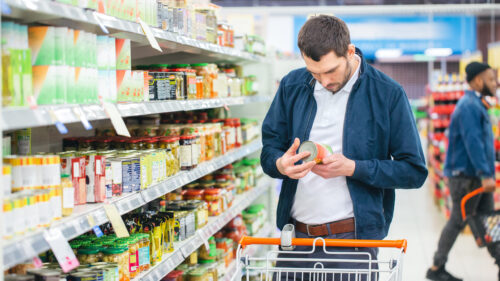Trend Watch: Clearing Consumers’ Supply Chain Concerns

With so much of the last two years feeling uncertain, consumers have started to look deeper into areas where they could have some control.
One key area has been understanding where their food and beverages come from and what their journey along the supply chain looks like. In addition to the pandemic, the ability to trace down ingredients during outbreaks of foodborne illnesses—like salmonella or listeria—have heightened the public push for transparency from both consumers and corporations. This is only expected to grow with recent data finding that food traceability investments could reach an estimated $19 billion by 20231.
Making the transition toward a more transparent supply chain doesn’t have to be difficult. Formulators can jump on the transparency bandwagon by using ingredients that come from suppliers that already work to ensure high ingredient standards.
Here are three main factors producers should look for when seeking the best supply chain partners:

1. Sense of Control
With a combination of the pandemic and foodborne illness outbreaks, consumers clearly want the extra security of knowing where their ingredients come from. In fact, food safety and hygiene have become a top concern for global consumers as a direct result of the pandemic2. The sense of control and knowledge provided by understanding the “who, where and when,” behind an ingredient’s travel from farm to fork can offer consumers relief in a time of uncertainty.

2. Sustainability Focused
Beyond wanting to know where ingredients come from, there continues to be a push for sustainability that is helping to increase existing transparency demands. Consumers aren’t blindly accepting that products are sustainable—they want proof to back up the claims. Notably, the United Nations reported that 85% of global consumers indicated that they have shifted to purchasing more sustainable products3. Using ingredients that are both widely viewed as sustainable and sourced under the most trusted practices tells customers that the brand is authentic in their actions.

3. Preventing Foodborne Illness
It is estimated that 48 million Americans will contract a foodborne illness each year4. To figure out the problem, producers must trace ingredients across a complex and challenging global supply chain to locate the source. Rather than retroactively focusing on traceability after an outbreak, producers can become proactive by sourcing their ingredients from the start. When you start with the knowledge of where ingredients came from, the process of stopping a future spread becomes faster and more achievable. It also creates the proven high standards farmers, suppliers, and consumers can trust.
Explore our applications
For more trending recipes and innovative solutions, such as Banana Fudge and Dragon Fruit Smoothie Bowls, check out our innovative solutions application possibilities.
Learn More
Whether you’re offering your consumers a sense of control, sustainable goods, or working to prevent illnesses, having a transparent supply chain can be the clear solution for producers. From start to finish, the ingredients available at Chaucer Foods are sourced sustainably and ethically. We not only care about our ingredients, but the working conditions of those growing them, the environment they come from, and the practices used to produce them.
On the hunt for more information on ethically and sustainably sourced ingredients, with a transparent toolkit to back it all up? Check out our Q&A with Chaucer’s Group Head of Technical & Quality, Matt Hill, to learn more.
References:
1 “Resilience through disruption,” AgriNovus Indiana. January 2021.
2 “Understanding Agri-Food Traceability System User Intention in Response to COVID-19 Pandemic: The Comparisons of Three Models,” National Library of Medicine. January 2022.
3 “Recent Study Reveals More Than a Third of Global Consumers Are Willing to Pay More for Sustainability as Demand Grows for Environmentally-Friendly Alternatives,” BusinessWire. October 2021.
4 “From Farm to Table, Here’s How Technology Is Being Used to Push Back Against the Threat of Foodborne Illness,” Risk & Insurance. February 2022.







